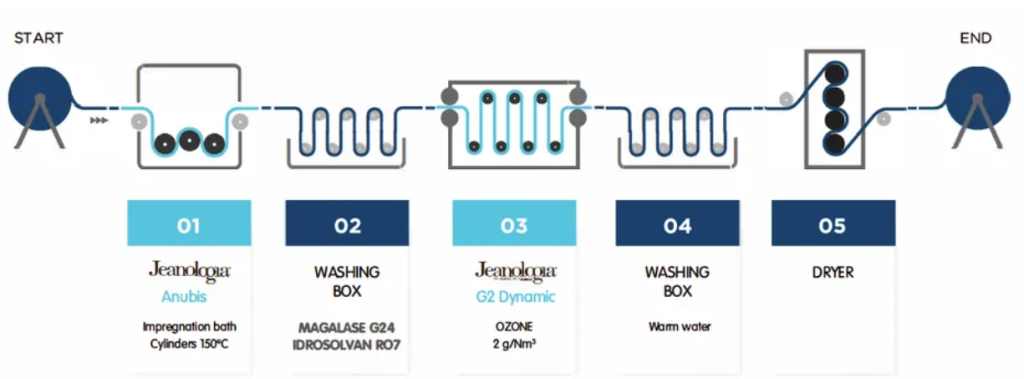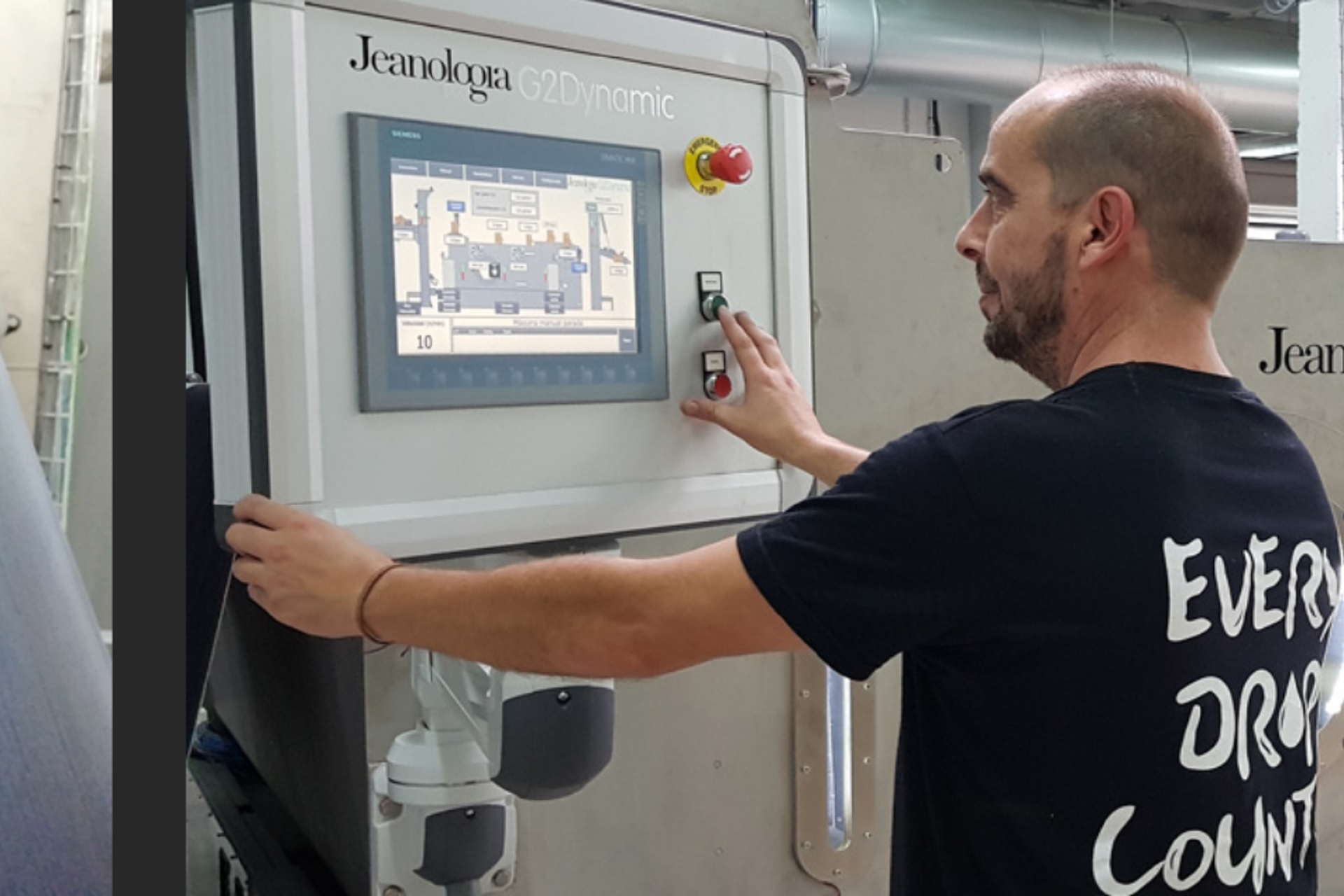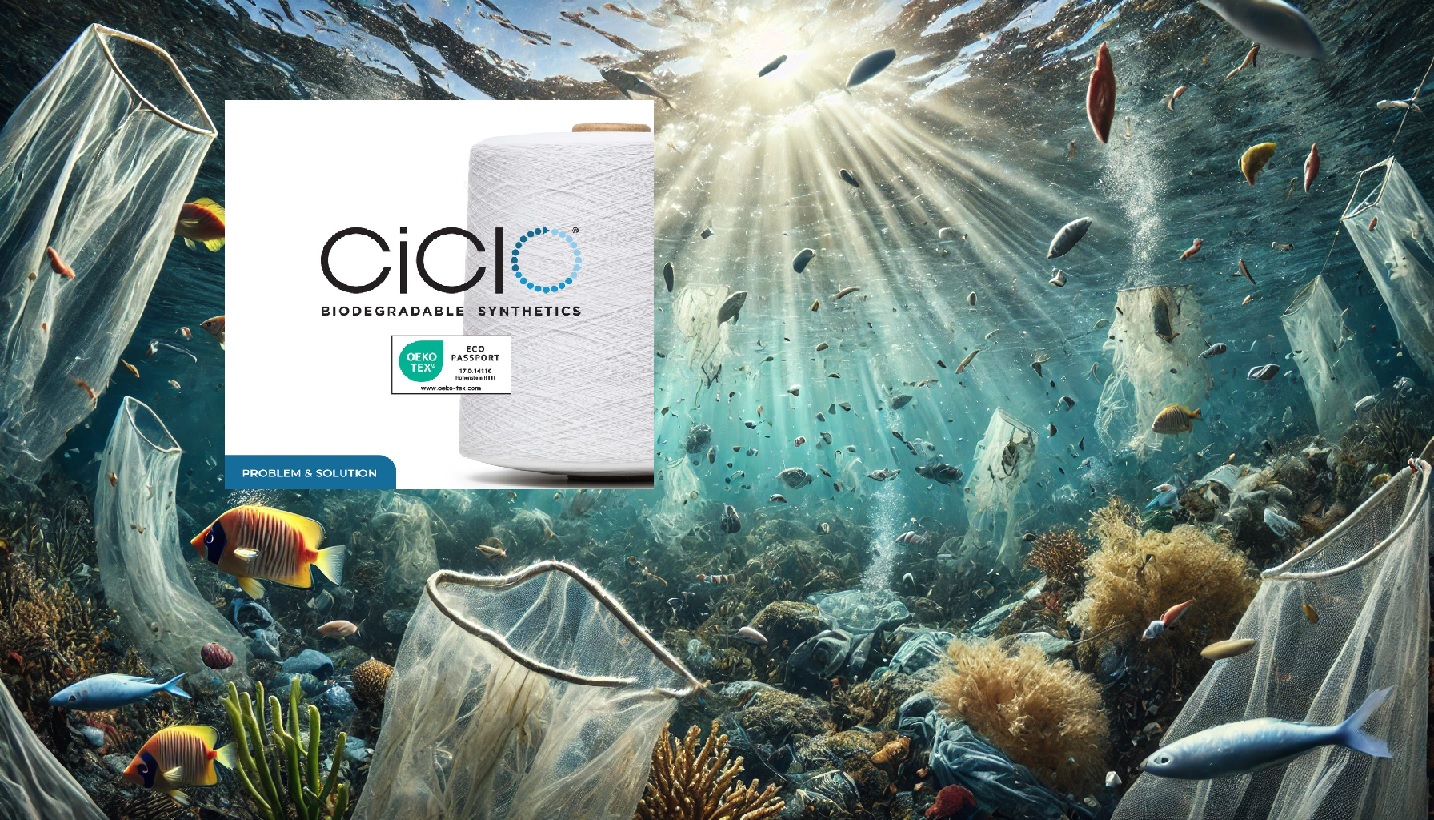Desizing is the process of removing the protective coating/sizing on the surface of warp yarn that is applied before weaving to prevent yarn breakage during weaving and improve weaving efficiency. However, desizing also involves the use of large amounts of water, chemicals, and energy that have negative impacts on the environment and human health. How can we desize fabric in a more sustainable way that reduces water and energy consumption, as well as chemical waste? The answer may be a Sustainable Desizing Process, developed by Bozzetto Group.
Bozzetto Group is a company that specializes in chemical solutions for the textile industry, in partnership with Jeanologia, a company that develops eco-efficient technologies for fabric finishing. Their sustainable desizing process uses ozone technology, along with certified chemicals, to desize fabric in a continuous line that saves up to 90% of water and 80% of energy compared to conventional methods.
In this article, we will explain how this process works, what are the chemicals involved, what are the benefits for facilities and laundries, and how it can help you achieve your sustainability goals in the textile industry.
What is Ozone Technology?
Ozone technology is the core of the Sustainable Desizing Process. It is a technology that uses ozone gas (O3) to treat fabric in an Anubis & G2 Dynamic line developed by Jeanologia.
Ozone is a powerful oxidizing agent that can react with organic and inorganic substances on the surface of fabric. By applying ozone to fabric, Anubis & G2 Dynamic line can remove the starch-based size and other impurities from the fabric without using high temperature or large amounts of water.
Ozone technology is a highly efficient and eco-friendly method that reduces the environmental impact of desizing by minimizing water and energy consumption, chemical waste, and carbon footprint. It also improves the quality of the fabric by enhancing its softness, brightness, fastness, and dimensional stability.
What are the Chemicals Involved in Sustainable Desizing with Ozone Technology?
The chemicals involved in the Sustainable Desizing Process are two products developed by Bozzetto Group: IDROSOLVAN RO7 and MEGALASE G24.
IDROSOLVAN RO7 is a high yield detergent for scouring and bleaching with outstanding emulsifying power towards fatty substances and silicon oils. It is suitable for every kind of goods (knitted and woven fabrics) and highly efficient for blends with elastomeric fibers. Idrosolvan RO7 is an extremely low foaming agent with excellent biodegradability. It is approved by bluesign, ZDHC, GOTS, Inditex, and GRS compliant.
MEGALASE G24 is an alpha-amylase enzyme for desizing of woven fabrics sized with starchy derivatives. It is effective at room temperature and up to 70-75°C, stable in a wide range of pH (6 – 10), and also in contact with extra-fibre substances (fatty derivatives, polyacrylates, waxes). Megalase G24 degrades all kinds of starchy derivatives obtaining a high value on the Tegewa scale. It presents an excellent biodegradability and it is GOTS approved and GRS compliant.
These chemicals are used in combination with ozone technology to achieve optimal results in desizing.
How does the Ozone Sustainable Desizing Process Work?
The process works as follows:
- The fabric is exposed to Anubis Unit.
- Anubis is a technology that helps in controlling the shrinkage of fabric.
- It is based on the concept of thermal shock, which means exposing the fabric to extreme temperatures for a short period of time.
- This process helps in relaxing the fabric, making it more pliable and easier to work with.
- The relaxation of the fabric also helps in achieving maximum shrinkage control, which is important in the textile industry.
- Anubis technology does not require the use of water, which is a significant advantage as it reduces the environmental impact of the process.
- The technology is also time-efficient, as it can achieve the desired results in a short period of time.
- Overall, Anubis technology is a sustainable and efficient solution for fabric shrinkage control and fabric relaxing.
- The fabric is impregnated with IDROSOLVAN RO7 and MEGALASE G24 in an alkaline solution (2.5-10 g/L NaOH) at different washing times (5-30 minutes) and temperatures (40-100°C)
- The fabric is exposed to ozone in G2 Dynamic unit.
- The fabric is washed with water.
- The fabric is dried.

What are the Benefits for Facilities?
The benefits for facilities that use the Sustainable Desizing Process are:
- Water saving: 7-10 L/kg
- Energy saving: 80%
- Chemical saving: 50%
- Carbon footprint reduction: 85%
- Mineral resources saving: 69%
- Process time reduction: 50%
- Space reduction: no need for rotary stocking
- Quality improvement: softer handfeel, higher whiteness, better fastness, lower back staining, higher dimensional stability
Conclusion
The Sustainable Desizing Process is a game-changer in the textile industry that can help you achieve your sustainability goals while improving your productivity and quality. It is a novel and innovative method that uses ozone technology, along with certified chemicals, to desize fabric in a continuous line that saves up to 90% of water and 80% of energy compared to conventional methods. It also improves the quality of the fabric by enhancing its softness, brightness, fastness, and dimensional stability.
References
Sustainable Photocatalytic Desizing Process for the Starch-Based Size
How to minimize the environmental impact of desizing process – Bozzetto Group



